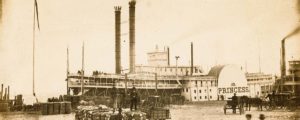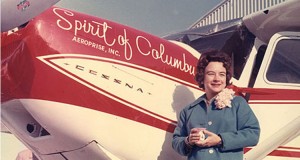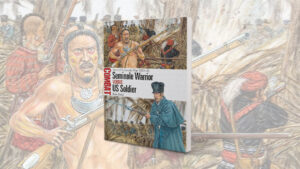Lee, posted near the physical center of the action, was curiously detached from the combat. According to one of the foreign observers accompanying the Rebels, during the afternoon and early evening the general “only sent one message, and only received one report.” An artilleryman positioned nearby noted that his “countenance betrayed no more anxiety than upon the occasion of a general review.” Soon after the combat ended, Lee had to evaluate what had been accomplished this day, yet of his three corps commanders only Hill made a personal report. The other two sent surrogates with summaries that failed to convey a complete picture of their circumstances. Perhaps that in itself should have made it clear that Longstreet and Ewell had their hands full. However, already lining up his sights on July 3, Lee did not read anything into the absence of the two officers whose personal observations should have shaped his planning.
Based on what he saw, what he was told, and what he believed, Lee assessed that “Longstreet succeeded in getting possession of and holding the desired ground….Ewell also carried some of the strong positions which he assailed….” The desired ground was the Peach Orchard, which Lee thought presented his cannons with an elevated platform sufficient to dominate the Yankee lines along Cemetery Ridge. In fact, as Longstreet’s able artillery chief, Col. Edward P. Alexander, had learned firsthand late on the afternoon of July 2, the ground rose again some 40 feet at the Federal main line of resistance, so packing the Peach Orchard with Confederate cannons provided none of the advantages Lee imagined.
Similarly, Ewell’s report suggested he had penetrated the enemy’s principal defensive lines when, in fact, his troops had taken possession of trenches abandoned by the Federals located well down the slope from the hilltop, which was still heavily fortified and stoutly defended. Ewell’s inaccurate information led Lee to conclude that the Confederate Second Corps “would ultimately be able to dislodge the enemy.” With the benefit of hindsight, it now seems clear that the victory Lee was seeking at Gettysburg loomed so large in his thinking that he only processed the pieces of information that would validate his resolve to continue the fight for one more day. Having composed a picture of an enemy army on the ropes, and buoyed by his faith in his men, he determined to press ahead.
“The result of this day’s operations induced the belief that with proper concert of action, and with the increased support that the positions gained on the right [by Longstreet] would enable the artillery to render the assaulting columns, we should ultimately succeed,” he later wrote, “and it was accordingly determined to continue the attack. The general plan was unchanged. Longstreet, re-enforced by Pickett’s three brigades,…was ordered to attack the next morning, and General Ewell was directed to assail the enemy’s right at the same time.”
Also receiving orders was Jeb Stuart, who had reached the battlefield at some point in the afternoon of July 2, well ahead of his troopers, who would not be available for any serious work that day. Lee appears to have passed over Stuart’s belated arrival without comment, although some postwar memoirs manufactured a bit of dialogue to show his displeasure. Speaking of these events some five years in the future, Lee alluded to Stuart’s failure when he allowed that the Gettysburg fight was “commenced in the absence of correct intelligence.”
What was supposed to be a rapid cavalry march to the head of Lee’s infantry columns had been bedeviled by fate and fateful decisions. Despite what Lee and Stuart believed, the Union forces were already moving north when the operation began, forcing the Rebel riders on a wide detour to reach an unguarded Potomac ford. The chance capture of a U.S. supply train outside Washington that same day further upset Stuart’s timetable. He lost valuable time paroling Yankee teamsters and guards, and was then burdened by attaching the slow-moving wagons to his column. There were several brief but sharp encounters with Yankee cavalry and a poor read of the situation by Stuart who, on July 1, closed on Carlisle, Pennsylvania, in a vain effort to connect with Ewell. Compounding his errors in judgment, Stuart then tried to dislodge Pennsylvania militiamen holding the town until early in the morning of July 2, when he at last learned the location of Lee’s army.
Lee arose on the morning of July 3 to find his plans already unraveled. Without waiting for any signal from the opposite flank, Richard Ewell resumed his assaults against Culp’s Hill at dawn. Lee intended for Ewell and Longstreet to launch their attacks “at the same time,” yet nothing in Ewell’s instructions to his subordinates suggested any need for coordination. It would seem that Ewell’s sudden obsession with capturing Culp’s Hill overrode any other considerations. Once again Lee had failed to make explicit the critical part he expected his Second Corps commander to play.
Ewell wasn’t Lee’s only problem lieutenant this morning. When he checked with Longstreet to find out how far along his preparations were, he learned that the officer had spent the night trying to locate a way around the enemy’s left flank, now pegged to the two Round Tops. Lee also discovered, seemingly for the first time, that the two Longstreet divisions engaged on July 2 were in no shape to resume operations. Considering the proximity of his and Longstreet’s headquarters, Longstreet’s failure to inform—and Lee’s failure to discern—this state of affairs again represented a significant breakdown.
It speaks to Lee’s mental resilience and unflagging determination that he immediately cobbled together a new plan. The prospect of calling off an attack never entered his mind. Longstreet and Hill, as well as several subordinate officers and their staffs, now met with their chief to see what resources were actually available. From Longstreet, Lee had Maj. Gen. George Pickett’s fresh division, waiting close by in ready reserve. From Hill came Heth’s Division to join Pickett, backed up by four brigades—two from Pender’s Division, two from Richard Anderson’s—for a total of about 11,800 troops. Selecting Heth’s Division provided a focus for the attack, since it was roughly opposite the Federal center, defended by 6,500 troops.
Much to Longstreet’s surprise, he was tapped by Lee to direct the combined operation, even though Hill had at least as many men committed to the assault. Speaking with a bluntness that perhaps he hoped would recuse him once and for all, Longstreet said: “General, I have been a soldier all my life. I have been with soldiers engaged in fights by couples, by squads, companies, regiments, divisions, and armies, and should know, as well as any one, what soldiers can do. It is my opinion that no fifteen thousand men ever arrayed for battle can take that position.” Nonetheless, Hill’s poor handling of troops on July 1 was still fresh in Lee’s mind, so Longstreet got the assignment.
While preparations went forward, Lee added other elements to the plan to improve its chances of success. He intended to precede the assault with a massive bombardment of the target area involving all the cannons from Longstreet’s and Hill’s corps. With Hill’s guns included in the mix, the Confederates would catch many of the Federal batteries on Cemetery Hill and Ridge in a killing crossfire. He explained this to the Army of Northern Virginia’s artillery chief, Brig. Gen. William Nelson Pendleton, and left him to handle the details.
[continued on next page]




